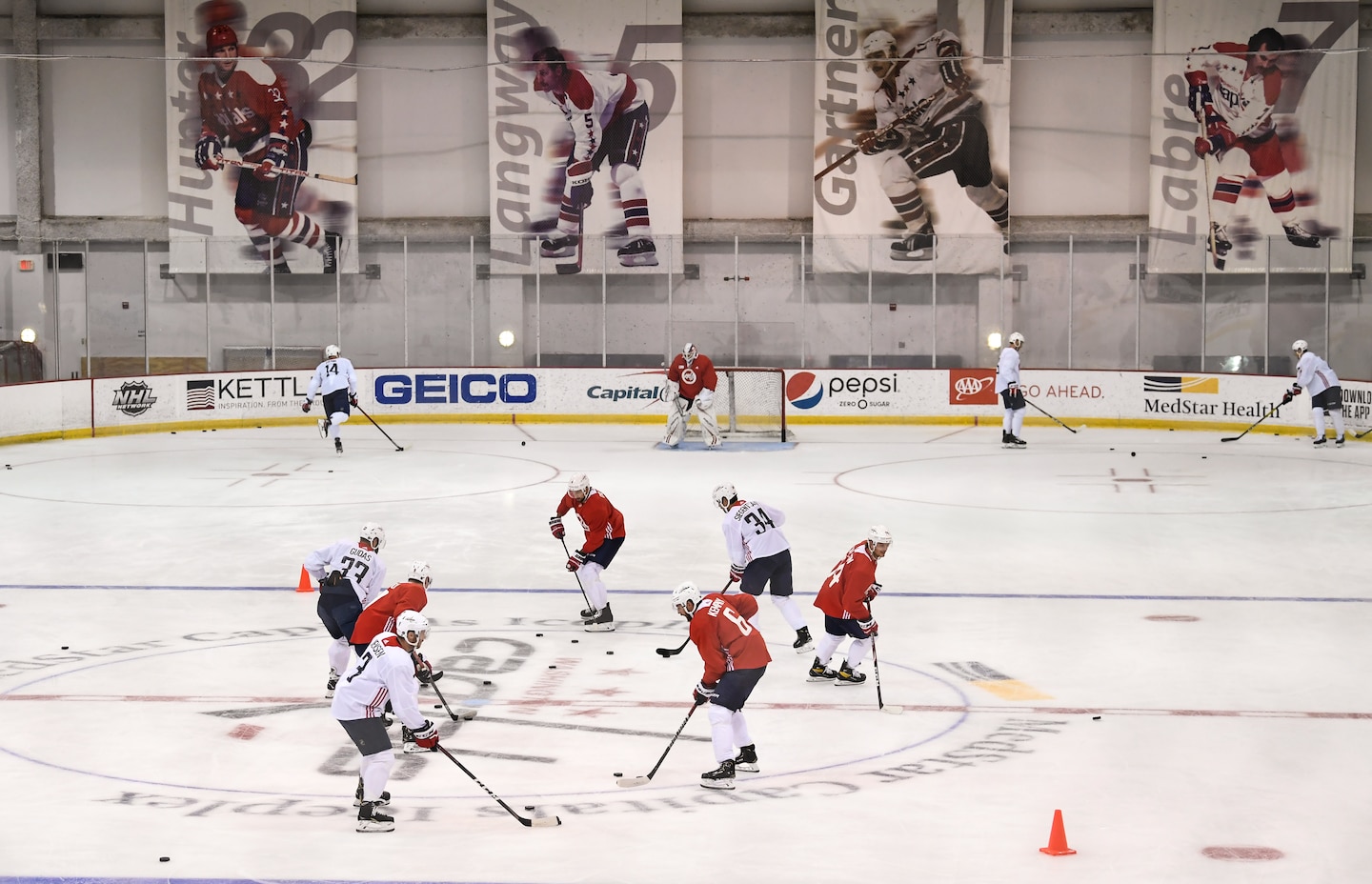As NHL returns, Capitals players and fans try to balance escapism and safety

Players, however, mainly see sports as a positive escape and a way to help during these tumultuous times. Coach Todd Reirden describes the return of sports as a distraction and a “sign of normalcy and that is really our role in this, is trying to do something like that.”
“At the end of the day it is the entertainment business and that is what we do,” Capitals winger Tom Wilson added. “We are being asked to come back and play. So I don’t have too much of an opinion on it. I want to play. I want to provide games for people to watch and hopefully everyone enjoys them.”
Winger T.J. Oshie said he believes the league has found a safe way to return and a lot of his personal excitement from playing now comes from knowing the excitement that players are able to bring to family, friends and fans alike.
“There have been a lot of dark times, a lot of tough times on a lot of people,” Oshie said. “I quarantined for four months and there were some times where you really didn’t know what to do in the house. So, I’m hoping by us playing we can maybe bring some light and some excitement and some fun into our fans and having them watch.”
With sports starting to come back, there is inevitable excitement but also understandable health worries.
Health and safety precautions are in place that have been negotiated by the league and the players’ association. Coronavirus tests will be paid for by the NHL and acquired through commercial sources.
“The ethical issue of the NHL diverting tests that could be used elsewhere remains, though my concern is less than it would be if they were in the U.S. using American lab capacity,” said Zach Binney, an epidemiologist at Oxford College of Emory University. “I trust the Canadians to not approve a plan that has an undue burden on their public health system.”
Additionally, the league is partnering with CLEAR, a privately run trusted-traveler program that uses fingerprint and iris identification technology to confirm a traveler’s identity in airports, to assist in tracking daily player health requirements during the restart in Toronto and Edmonton. In addition to a mobile app team personnel will use, more than 60 fully-integrated CLEAR kiosks will also be deployed across both cities to facilitate temperature checks and other operations.
“I think there’s a very good chance that the guys are going to be safer in the bubble than they are in the normal circumstances at home,” NHLPA special assistant to the executive director Mathieu Schneider said on a video call in mid-July. “If we didn’t have that assurance from the get-go on these things, we probably would’ve never started with this process.”
With the league continuing to follow the proper steps, players are also seeing the progress being made to make sure players and other team personnel are being protected. Capitals defenseman Radko Gudas had very strong opinions on the NHL restart plan in May, telling a Czech publication he thought the NHL should not try to restart and it was “a bit sad” the league was “willing to risk the health of so many players for money.”
However, Gudas reported to Capitals’ training camp and said Thursday it was for two reasons. First, to win a Stanley Cup and second, because he felt confident in the health and safety protocols put in place.
“A lot of the talks was about the health and about providing the best possible environment for the players to stay healthy and perform in this time so you know I felt pretty confident with all the rulings and all the stuff happening around it and the precautionary reasons and so I didn’t see a reason not to compete for this trophy,” he said.
From a fan perspective, there is a mix of excitement and worry that surrounds the restart. Lifelong hockey fan Amanda Powers, 20, thinks it’s fair for fans to want to see sports come back, but they are also aware of the danger and risk that comes with it.
Emelie Shany, 22, called the NHL restart a “twofold feeling.”
“Yes, I want hockey to come back, but on the other hand, I know these guys are husbands and fathers and playing and coming in contact with guys from other teams, especially ones from states that haven’t been doing too well case numbers-wise, there’s a lot of risk,” Shany said. “As a fan, I care about these players.”
And while players understand the worry, there is still an overwhelming sense that hockey hitting televisions in August is going to be an uplifting and encouraging notion.
“Obviously I’m no doctor but I’ve had an awful lot of people come up to me and say that they want to watch something on TV and that goes a long way with some people, you know, 7 o’clock or 4′o clock in the afternoon, just to be able to have something to feel a little bit normal and watch some sports,” Wilson said. “I know I’ve had that feeling a little bit.”
Read more on the Capitals:






